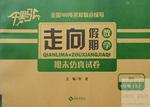题目内容
World Expo 2010 Shanghai China is to be staged in Shanghai from May 1 to October 31, 2010. If you plan to visit the Shanghai Expo this summer, China Pavilion(馆)is a must - see area for you.
China Pavilion, which is called Oriental Crown, is located at the center of the Expo site. Standing 63 meters tall, the China Pavilion takes the shape of an emperor's crown, with the upper layers larger than the lower ones. Covering 160,000 square meters in floor space, the pavilion is made up of a national hall and a regional(宗教的 ) hall. Buildings on the China Pavilion began on Dec. 18, 2007. The design of the China Pavilion was picked from a total of 344 designs put for??ward by Chinese from around the world. The pavilion has both traditional and modern features, which helps devel??op the theme of the 2010 Expo; "Better City, Better Life. For example, it is red in appearance, which covers the traditional Chinese culture, and it is green indoors, with the use of energy - saving techniques. The Shanghai World Expo is expected to attract 70 million visitors from across the globe. It is estimated that 400,000 people will visit the Expo and its 140 pavilions every day during the period, but the China Pavilion is only able to receive about one tenth of the total. How to hold so many people in the pavilion remains a tough task. Luckily, the China Pavilion is built as a permanent(长久的) landmark.
During the Expo, the main structure(结构 ) will be used for an exhibition based on the theme of “ Chinese wisdom in urban (城市)development” by explaining the values of harmony(和谐 ), nature and spirit. The three - story pavilion has three sections. The top floor's “Footprint of the East” will show some of the changes in Chinese cities. There, you can see a film which shows how Chinese cities have changed, especially in the past 30 years. According to Lu Chuan, director of the film, the scenery is like something from Lord of the Rings. On the second floor, “Journey of Wisdom” will explain China's four great inventions. And the ground's “ Blossoming” City will display scenes from cities of the future.
Which of the following words can be used to describe the China Pavilion?
A. Tiny. B. Imagination C. Foreign D. Environment - friendly.
The China Pavilion can receive________visitors at most per day.
A. 20,000 B. 40,000 C. 100,000 D. 400,000
We can infer(推断 )that________.
A. Some foreign friends took part in the designs of the China Pavilion
B. You can continue to visit the Japanese Pavilion after the Expo is over
C. China Pavilion will be pulled down after the World Expo 2010 is over
D. China Pavilion will continue to be open to visitors after the Expo is over
On the second floor, you can________.
A. enjoy a film about the changes of cities in China
B. learn what Shanghai looked like in the 1920's
C. find out how paper was invented
D. see how Chinese cities will look like in the future
【小题1】D
【小题2】B
【小题3】D
【小题4】C
解析:
略

 千里马走向假期期末仿真试卷寒假系列答案
千里马走向假期期末仿真试卷寒假系列答案

